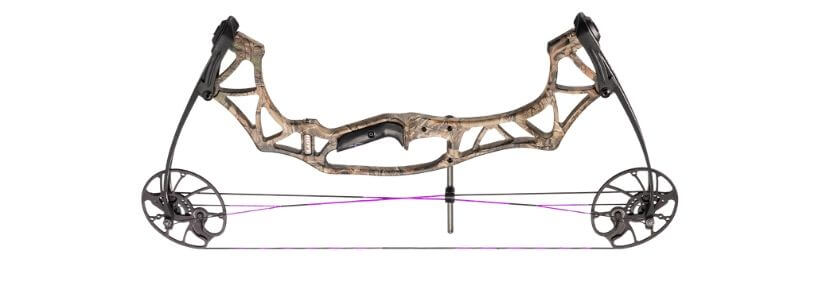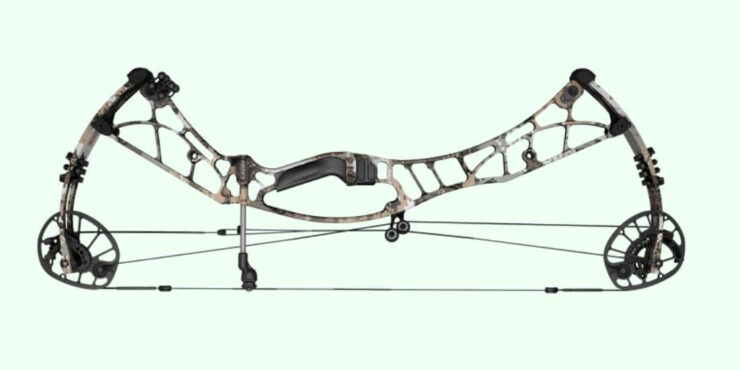Learning to shoot with a bow and arrow is a whole process with a lot to learn and practice. There is so much to grasp — from how to dial-in the correct stance, to the recommended positioning of fingers on the string when mastering the fingers shot.
I’ll be honest; I didn’t find it necessary to learn about the working parts of a compound bow when I was getting started. Today, I can confirm that this possibly made my learning curve steeper.
Understanding the makeup of a bow makes it easier for archers to take full advantage of all the components to enhance the accuracy of each shot.
In this post, ill shed some light on the parts and functions of a compound bow. I intend to equip you with crucial information to get you started and hopefully set you up on the path to becoming an established archer.
Let’s begin!
COMPOUND BOW parts and functions
Riser and Grip
The main part of a compound bow is known as a riser. Various other components are mounted on it, including the arrow rest, bow sight, limbs, and quiver. Risers often have more character, and manufacturers give unique designs, colors, and grip styles to different models.
Sights
Compound bow sights are attached to the riser, right above the grip. They help you line up your arrow aim for more accurate shooting. Think of bow sights as the beads located at the end of shotgun barrels. Their work is to help you establish where your projectile is aimed.
A decent number of sights have a circular opening that houses small, colored pins. These pins are vertically or horizontally fixed in the center, and they make it easier to center the sight in the middle of your target. They provide a reference point for aiming.
Rest
When loading an arrow, the area where its front end sits is known as the rest. Different bows have different rest styles, although the drop away rests are the most common, they are either spring or mechanically loaded to lift the arrow when you draw your bow. Once you release the arrow, the drop away rest “drops.”
Quiver
The bow quiver is the part that holds extra arrows. It can be mounted to the riser for easy access, although a good number of people still prefer carrying their quivers on their back or hip.
Limbs and Limb Dampers

Limbs are fiberglass planks attached to the riser. They are situated at the top and bottom of a compound bow and are often angled out between 45 and 90 degrees. Because the function of the limbs is to take in the stress each time you pull back your bowstring, they are designed to be flexible.
Solid Limbs
There are different limb styles, and the most common ones are the solid limbs made from one piece of fiberglass. Such limbs have limb dampers made from rubber that help to soak up the shock.
Split Limbs
You can also find the best compound bow for target shooting with split limbs, and they have two limbs attached to the riser. The main benefit of split limbs is that they produce lesser hand shock and tend to be more durable than their solid counterparts.
Parallel Limbs
Yet another style you can find is the parallel limbs that are mainly found on hunting compound bows. Instead of featuring the traditional “D” bow shape, the top and bottom limbs are parallel to each other. This makes them quieter and also reduces the recoil when the bowstring is released.
Cams, Axles
Those devices that look like wheels attached to each end of the limbs are known as cams. Thanks to the axles, compound bow cams can rotate on the bow.
The distance between the axles is referred to as the axle-to-axle distance. Each cam has a backstop that prevents you from pulling your bow back further than a full draw for a steadier aim and more consistent shots.
Let-off or Valley
The valley of a compound bow can be described as the distance between the full draw and the peak weight. This is the distance through which you need to hold the full draw weight.
When you start pulling your bow to a full draw, the string will feel hard to pull back. You will, however, notice that it is easier to hold once you approach the full draw because it’s now supported by the let-off (mechanical relaxation) system. A good number of compound bows offer an impressive 80% let-off at full draw.
Cables and String
Cables wrap around the cam, and we all know what the string is — that part you pull back when shooting. The brace height is, on the other hand, the distance between the string and the grip.
When the brace height is greater, the bow is somewhat easier to manage. In case the brace height is shorter, your arrows may pick up more speed, although this will also increase the risk of inconsistencies that can harm your shooting accuracy.
D-Loop
The D-loop on a compound bow is attached to the centermost point of the string. It is just a small loop of string used for connecting a mechanical archery release that helps in pulling the bow to a full draw for enhanced consistency.
One of the critical functions of a D-loop is to enhance the longevity of the string by minimizing the pulling stress that can cause premature tear and wear.
Peep Sight
You have seen a small plastic circle with an opening at the center just above the D-loop, right? Well, this is known as the peep sight. It is located inside layers of cables and string, and it comes in front of the eye when a bow is pulled at full draw. You can see the sights through the peep sight, and this improves the overall consistency of your shots.
Kisser Point
When at a full draw, the kisser point is above the D-loop, close to the corner of your mouth. Depending on your personal preferences, you can place a release, string, or knuckle on your face to serve as an anchor.
I prefer putting a kisser button on my string. This is a small, diamond-shaped plastic that clamps on the string, although it’s pretty easy to remove. The kisser point, just like the peep sight, aids in improving your shooting consistency.
Final Words
Compared to recurve and longbows, compound bows are easier to use and more ideal for beginner hunters. Learning the parts and functions of a compound bow will not only make your learning curve gentler but also drastically improve your odds of making each shot count.

